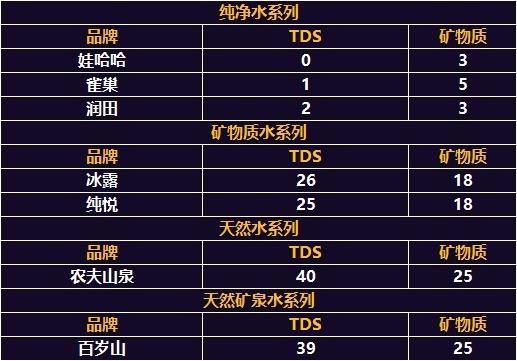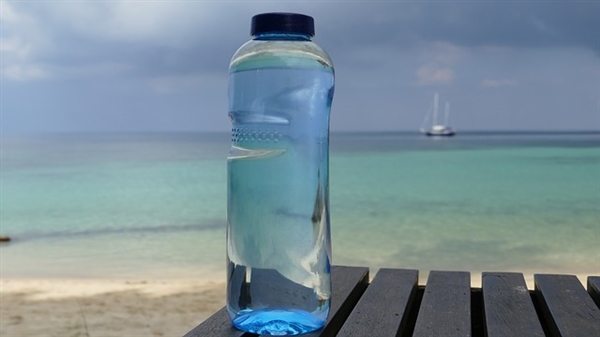What do you drink? Have a bottle of mineral water!
This is probably the most common dialogue in daily outings, and we have become very accustomed to selling it in supermarkets.Small bottled water is called mineral water.For mineral water, it seems that no one has ever been as entangled as drinking drinks. Which brand is better?
Which brand is healthier?But is bottled water really all mineral water? Actually, it is not!

Today, we have selected seven kinds of bottled water that are most common to everyone from the bottled water on the market. Let’s take a look at the differences between these eight kinds of bottled water!
Bottled water is not as simple as you think, some are "pure" and some are "impure"
We are all used to calling bottled water mineral water, but in fact mineral water is just one of many kinds of bottled water. At present, mineral water is roughly divided into four types:

Wahaha is pure water without impurities.
Pure water:"Pure water without impurities" made by RO reverse osmosis membrane technology, distillation and other processes.
In principle, it can be said to be pure H2O. For example, Wahaha, Runtian and Nestle used in this test are all pure water.

Chunyue is artificially added mineral water.
Mineral water:Mineral water is generally made of urban tap water as raw water, then purified, added with minerals, sterilized and filled.
It can be seen that there are additives such as potassium chloride and magnesium sulfate on the ingredient list of some bottled water. Why should additives be added to drinking water?
This is artificial mineral water. Are these additives harmful to human body?
Please rest assured that all the products that can be marketed are products that meet the national Hygienic Standard for the Use of Food Additives (GB2760-2007). For example, the pure joy and ice dew in this test are all mineral water.

Nongfu Spring is natural water, not natural mineral water.
Natural water:Low-level treatment (filtration, ozone treatment, etc.) of surface water or underground spring water, artesian well water, etc., to retain the mineral elements necessary for human body in raw water. For example, the most classic Nongfu Spring is typical natural water.

Baisui Mountain is a natural mineral water.
Natural mineral water:Water containing a certain amount of minerals and trace elements is collected by natural gushing or drilling in the deep underground. For example, the Baisui Mountain in this test is natural mineral water.
OK, after seeing the above categories, do you think that the water in these years has been wasted? There are so many classifications of bottled water, which used to be collectively called mineral water.
Test: Purity of pure water varies. Natural water contains more minerals.
So is the water that is nominally XX water really XX water? Next, we will test it through a professional small instrument to see how the water quality of each bottle is.

TDS and mineral content of 7 bottles of water were measured with TDS pen and mineral pen.
I don’t know, according to the measured results, there are some differences in the measured data of different bottled water due to different reasons such as purification equipment, formula and water quality.

Measured data of bottled water of various brands
The first is pure water. It can be seen that although the TDS values of the three products are very low after testing, they almost reach the standard of pure water, but onlyThe Wahaha family achieved 0, which is relatively the purest of the three bottles of pure water.Yes.
Next, let’s look at mineral water. I don’t know if it’s because we all buy mineral water under Coca-Cola (the same formula as the company? ), you can seeThe TDS and mineral content of the two products are similar..
Finally, natural water and natural mineral water, although the water source and processing methods are different, but from the perspective of minerals and TDS values,There is not much difference between the two data..
However, the artificially added mineral water, which is safer than everyone is worried about, is rich in dissolved solids even more than natural water according to the measured TDS data.
Therefore, it can basically be judged that the actual mineral raw materials added in each bottle of water are very small, so it is very safe.

Test results of PH value of different bottled water
First of all, I will give you a little knowledge. Don’t be too superstitious about drinking weak acid or weak alkali water. It is scientifically certified that as long as the water that meets the national standards is a good water source, weak acid and weak alkali will not have a positive or negative impact on the human body, and there is no therapeutic effect.
In addition, in the national standard GB5749-2006, the PH value should be between 6.5 and 8.5 in cities and towns and between 6.5 and 9.5 in rural areas, which is a conventional limit indicator. From the test results of 7 bottles of bottled water, the difference of pH is also different.
Comment: Which bottle of water should I drink?
First of all, you should make it clear that the main purpose of bottled water is to quench your thirst, so no matter whether you drink pure water or mineral water, most normal users are also trying to quench their thirst, so there is no difference between good and bad in theory.
Some people may say that mineral water and natural mineral water contain minerals, which can supplement trace elements, but in fact, the content is really very small, which is basically not very helpful to the human body.
Including some high-end bottled water imported from abroad, in fact, there is little difference between ordinary water and human health, mainly depending on personal habits and consumption power.

关于作者